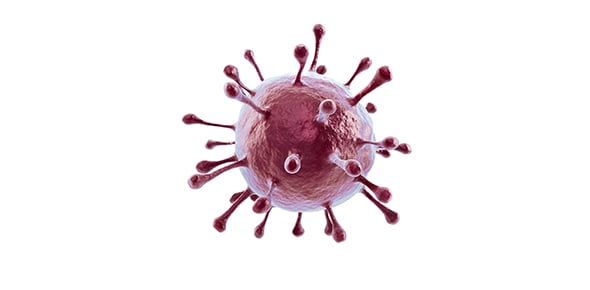Composite Cells

A quiz on the contents of the composite cell.
fairly detailed.
- 1.
It is impossible to describe a "typical" cell. What makes cells so diverse?
- A.
Size, shape, content and function
- B.
Color, shape, size, width
- C.
Flexibility, size, content and function
- D.
Content and function
- E.
Shape, size, color, weight
Correct Answer
A. Size, shape, content and function -
- 2.
What are the three basic parts of the cell.
- A.
Proteins, cytoplasm, cell membrane
- B.
Organelles, cell membrane, cytoplasm
- C.
Cell membrane, nucleus, and cytoplasm
- D.
Nucleus, nucleolus, cytoplasm
- E.
Organelles, nucleus, cytoplasm
Correct Answer
C. Cell membrane, nucleus, and cytoplasm -
- 3.
Though organelles are held in cytoplasm, they are more closely suspended by a liquid called cytosol.
- A.
True
- B.
False
Correct Answer
A. True -
- 4.
What is the cell membrane's function?
- A.
Regulates movement of substances in and out of the cell.
- B.
Provides the majority of cell structure
- C.
Provides cellular color
- D.
There is no purpose
- E.
Provides cellular movement
Correct Answer
A. Regulates movement of substances in and out of the cell. -
- 5.
What is the cell membrane composed of?
- A.
Phophate
- B.
Lipids (phospholipids/cholesterol), specialized proteins, and a few carbohydrates
- C.
Fats and Proteins
- D.
Phospholipids
- E.
Lipids ( phospholipids/triglycerides), proteins, and a few carbohydrates
Correct Answer
B. Lipids (phospholipids/cholesterol), specialized proteins, and a few carbohydratesExplanation
the combination of these makes the cell membrane. the cell membrane is thin, flexible, and somewhat elastic. it also has outpouchings and inpouchings that increase the surface areaRate this question:
-
- 6.
The cell membrane is selectively permeable. What does this mean?
- A.
It lets all materials in
- B.
It lets no materials in
- C.
It only lets oxygen in
- D.
It will let only some oxygen in
- E.
It will only let specific materials in.
Correct Answer
E. It will only let specific materials in.Explanation
specifically speaking, molecules that can dissolve in lipids such as carbon dioxide can pass through easily, but water soluble molecules will not pass by the membrane. for these rejected substances, the cell membrane becomes impermeable. but WHY!!!!??Rate this question:
-
- 7.
What does the cholesterol in the cell membrane provide?
- A.
Help in synthesis of proteins
- B.
Support of the membrane as well as help in creating an impermeable membrane to water soluble substances.
- C.
Act as the disposals of the cell
- D.
Have no use
- E.
Help in creating an impermeable membrane to water soluble substances
Correct Answer
B. Support of the membrane as well as help in creating an impermeable membrane to water soluble substances. -
- 8.
What are two types of membrane proteins and where is their location?
- A.
Epithelial: on the right side of the membrane Peripheral:goes all the way through both membranes, may protrude
- B.
Transmembrane: one the right side of the membrane Peripheral: associated with one side of the membrane
- C.
Peripheal: on the inner half of the membrane Epithelial: on the outer half of the membrane
- D.
Transmembrane : goes all the way through both membranes, may protrude peripheral: associated with one side of the membrane.
- E.
Transmembrane: any of the mishapen proteins Epithelial: proteins on the inner layer.
Correct Answer
D. Transmembrane : goes all the way through both membranes, may protrude peripheral: associated with one side of the membrane.Explanation
also keep in mind that these proteins can change shape. such shapes include globular proteins and rodlike, fibrous proteins.Rate this question:
-
- 9.
What are some of the functions of membrane proteins?
- A.
Bind incoming hormones starting signal transduction
- B.
Transport ions/molecules across cell membrane
- C.
Selective channels for certain ions/proteins
- D.
A and B
- E.
A,B,&C
Correct Answer
E. A,B,&C -
- 10.
What is a glycoprotein?
- A.
Gfs
- B.
Sgs
- C.
Gfs
- D.
Gfss
- E.
Sgsg
Correct Answer
B. Sgs -
Quiz Review Timeline +
Our quizzes are rigorously reviewed, monitored and continuously updated by our expert board to maintain accuracy, relevance, and timeliness.
-
Current Version
-
Jul 30, 2011Quiz Edited by
ProProfs Editorial Team -
Nov 10, 2009Quiz Created by
Physiomaster
- Anatomy Quizzes
- Bacteria Quizzes
- Bio Quizzes
- Biological Evolution Quizzes
- Biology Exam Quizzes
- Biology Test Quizzes
- Cell Biology Quizzes
- Chapters Of Biology Quizzes
- Classical Conditioning Quizzes
- Conservation Biology Quizzes
- Enzyme Quizzes
- Fungi Quizzes
- General Biology Quizzes
- Genetics Quizzes
- Immunology Quizzes
- Macromolecule Quizzes
- Marine Biology Quizzes
- Microbiology Quizzes
- Mitosis And Meiosis Quizzes
- Molecular Biology Quizzes
- Parasitology Quizzes
- Physiology Quizzes
- Prokaryote Quizzes
- Protist And Fungi Quizzes
- Protozoa Quizzes
- Respiratory Quizzes
- Spine Quizzes
- Stem Cell Quizzes
- Taxonomy Quizzes
- Traits Quizzes
- Ultimate Biology Quizzes
- Virus Quizzes
- Zoology Quizzes
 Back to top
Back to top


